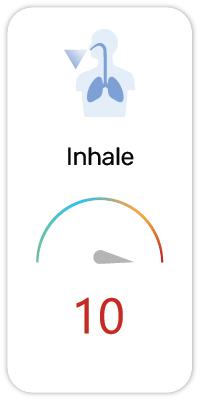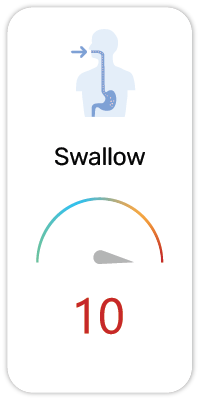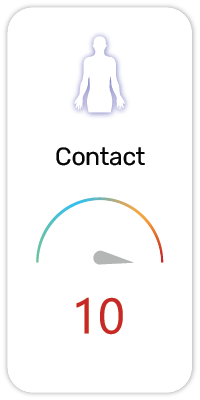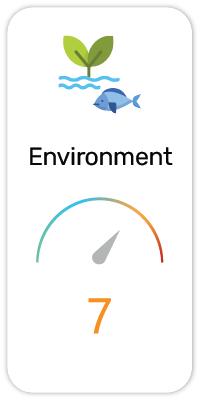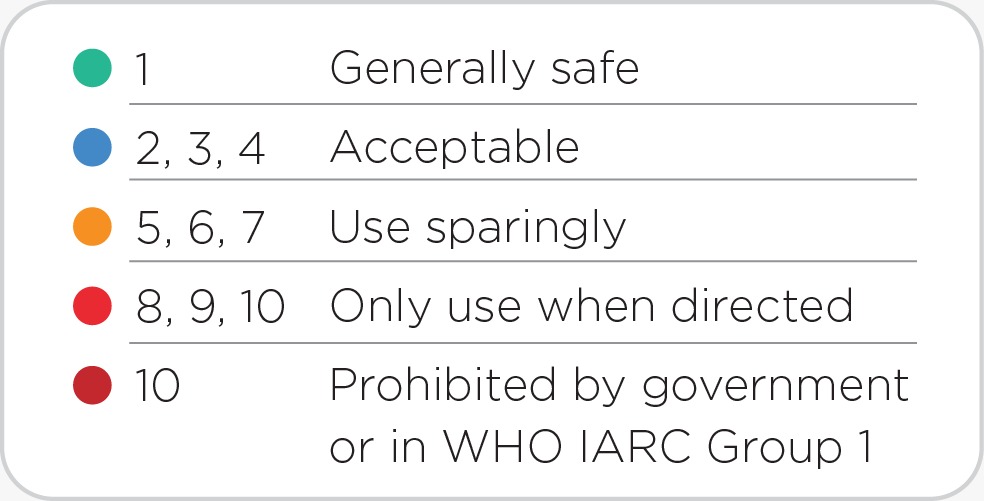Chlorine(in 9 products) Banned by Gov or classified as a carcinogen by IARC
Banned by Gov or classified as a carcinogen by IARC
Banned by Gov or classified as a carcinogen by IARC
Potential Risk Index®:
About:
Functions:
1. Preservative - Prevents and inhibits the growth of unwanted microorganisms which may be harmful
Chlorine is a commonly used household cleaner and disinfectant. It is widely used as an oxidizing agent in water treatment and chemical processes. It is also used in the bleaching process of wood pulp in pulp mills. Chlorine is a toxic gas with corrosive properties. It is widely used as bleach in the manufacture of paper and cloth and in manufacturing solvents, pesticides, synthetic rubber, and refrigerants. Chlorine has also been used as a chemical warfare choking agent. The lowest level at which humans can smell chlorine and notice its irritant properties generally provide sufficient warning of exposure; however, chronic exposure to chlorine causes adaptation of the sense of smell (olfactory fatigue) and tolerance to its irritant effects. Because of this, persons with a history of prolonged exposure lose the ability to identify when they are being exposed to chlorine. Chlorine is usually shipped in steel cylinders as a compressed liquefied gas. [1]
This substance has been prohibited by the European Commission for use in cosmetic products.
It is not approved to use as food additive (E925) in EU.
Scientific References:
1. PubChem: https://pubchem.ncbi.nlm.nih.gov/compound/24526
Regulatory References:
1. EU CosIng Annex II, SUBSTANCES PROHIBITED IN COSMETIC PRODUCTS [2017]
- Ref: II/78
2. CANADA INGREDIENT HOTLIST, List of Ingredients that are Prohibited for Use in Cosmetic Products [2019]
- Chlorine
3. Association of Southeast Asian Nations Annex II, Prohibited
- Chlorine
4. South Korea - Ministry of Food and Drug Safety - Prohibited/Restricted Chemicals
- Ref: 579
5. US CARB Identified Toxic Air Contaminants
- Chlorine
6. E-numbers which are not found in EU FOOD
- E925
Safety and Hazards (UN GHS):
1. Causes severe skin burns and eye damage (H314)
2. Causes skin irritation (H315)
3. Causes serious eye damage (H318)
4. Causes serious eye irritation (H319)
5. Fatal if inhaled (H330)
6. Toxic if inhaled (H331)
7. May cause respiratory irritation (H335)
8. Causes damage to organs (H370)
9. Causes damage to organs through prolonged or repeated exposure (H372)
10. Very toxic to aquatic life (H400)
11. Very toxic to aquatic life with long lasting effects (H410)
Potential Health Concerns For:
1. Acute Lung Injury (PubMed ID:16625121)
2. Airway Obstruction (PubMed ID:30189237)
3. Anorexia (PubMed ID:25497111)
4. Bradycardia (PubMed ID:25456270)
5. Bronchial Hyperreactivity (PubMed ID:23146759)
6. Burns, Chemical (PubMed ID:22533443)
7. Cardiovascular Diseases (PubMed ID:22389181)
8. Disorders of Environmental Origin (PubMed ID:17938725)
9. Dyspnea (PubMed ID:20016425)
10. Edema (PubMed ID:22533443)
11. Erythema (PubMed ID:22533443)
12. Gas Poisoning (PubMed ID:20016425)
13. Hypothermia (PubMed ID:25497111)
14. Inflammation (PubMed ID:21131444)
15. Lethargy (PubMed ID:25497111)
16. Lung Injury (PubMed ID:17343743)
17. Myocardial Ischemia (PubMed ID:26629599)
18. Pulmonary Edema (PubMed ID:20819911)
19. Pulmonary Fibrosis (PubMed ID:30189237)
20. Respiration Disorders (PubMed ID:18579056)
21. Respiratory Distress Syndrome, Adult (PubMed ID:16625121)
22. Rhinitis (PubMed ID:15567471)
23. Weight Loss (PubMed ID:25497111)
User Comments:
Submit


